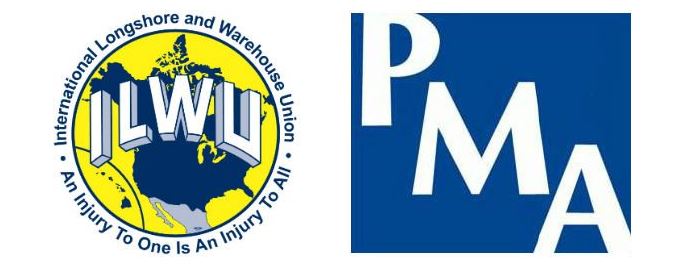
Contract talks started on May 10th between the Pacific Maritime Association (PMA) and International Longshore and Warehouse Union (ILWU), the two parties who represent many of the companies and workers that keep U.S. West Coast ports running.
WHO ARE the ILWU?
Labor Union representing port workers on the U.S. West Coast.
Members:
More than 22,000 workers employed at 29 ports along the West Coast of the United States which include California, Oregon, and Washington
WHO ARE THE PMA?
The Employers’ Association on the U.S. West Coast.
Members:
Approximately 70 companies comprised of shipping lines and terminal operators at 29 West Coast ports
The timing of the current contract negotiations is notable, Christine Solorzano, executive vice president of the Americas region at Shipco points out. “The current ILWU contract has remained unchanged for nearly eight years.
Now is the time they will try to negotiate increases with the ports being already highly congested and a backlog of vessels. If they do strike, we do not foresee these ports being able to recover before 2023.”
According to Sea-Intelligence, the terminal congestion index in North America remains at an elevated level despite a gradual improvement in February and March.
The congested market and record profits reported by carriers have given the union additional leverage over container lines and terminal operators.
“There is no doubt that the union has a strong hand when it comes to negotiations this year,” Casper Alexandersen, general manager for Shipco’s Los Angeles office notes.
Shippers are hedging against the risk of West Coast labor disruptions by shifting cargo volumes to U.S. East and Gulf Coast ports.
The West Coast’s share of U.S. imports from Asia has fallen to 58.2% percent, from 60% in 2021. East Coast ports gained a 1.1% share to reach 34.7% and Gulf Coast ports grew their share by 0.7% to 6.8%
According to the April 2022 issue of The McCown Report, April marks the 11th consecutive month where the y/y percent change in inbound volumes at East and Gulf Coast ports outperformed West Coast ports.
Data further shows the combined laden import throughput at East Coast ports is 18.7% higher than a year ago. In contrast, import volumes at West Coast ports slid -3.4% y/y.
Carriers have also deployed more services to the U.S. East Coast, data by maritime intelligence service shows. 30 Asia to East Coast services per month have been planned for May with capacity projected to reach 889,000 TEUs in the month of June, increasing by 40% over the 2021 full-year average.